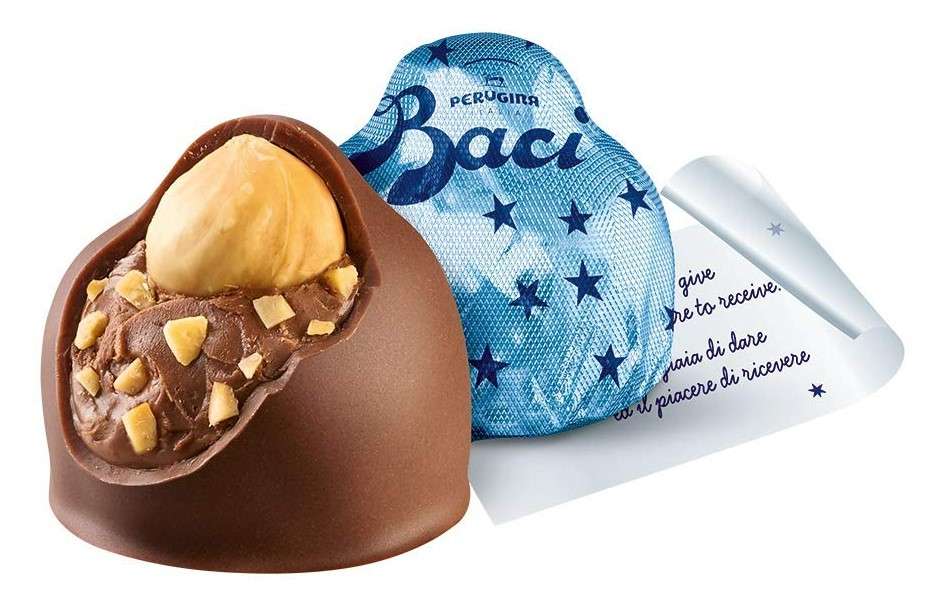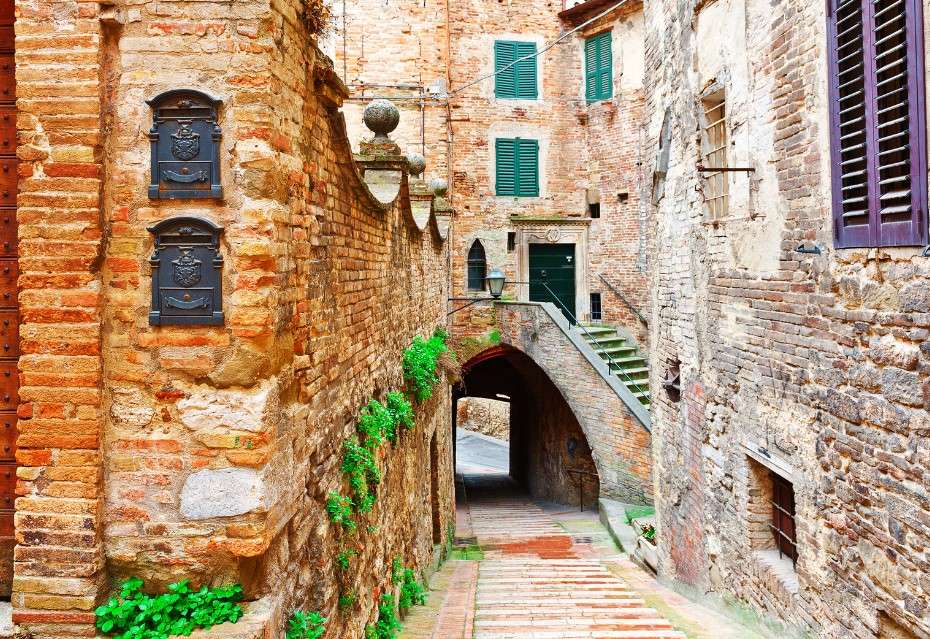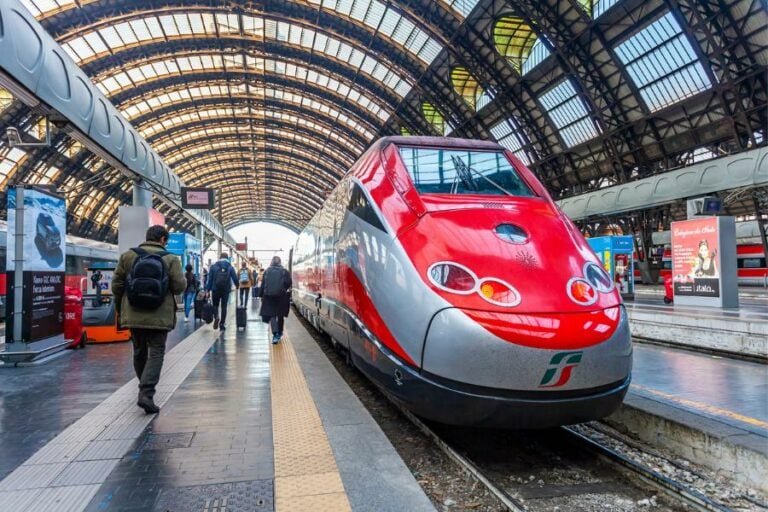Visit Perugia in One Day: Experience the Heart of Umbria

Buongiorno, amici! Join me as we explore the best of what to do in one day in Perugia, immersing ourselves in the heart of Umbria.
Get ready to discover the secrets of this historic city, ensuring your day is brimming with culture, art, and culinary delights.
Short on Time? Here’s Your One Day in Perugia Itinerary
I suggest perusing the entire guide to make the most of your visit. But if time is of the essence, here’s a streamlined, perfect day itinerary to ensure you experience the city’s highlights in just one day.
Morning:
- Begin your exploration at Piazza IV November, including Fontana Maggiore and Palazzo dei Priori.
- Visit the Perugia Cathedral (next to Piazza IV Novembre).
- Discover the National Gallery of Umbria.
Afternoon:
- Savor a leisurely late lunch at a traditional Umbrian restaurant.
- Wander through the ancient Etruscan Arch and explore the surrounding medieval streets.
- Visit the Rocca Paolina Fortress.
Late Afternoon / Evening:
- Relax in the gardens of Giardini Carducci before enjoying dinner with a panoramic view of the Umbrian hills.
Continue reading to learn about the best things to do and see in Perugia in one day.
This post contains affiliate links. When you buy something through one of the links on our site, we may earn an affiliate commission at no additional cost to you.
Geographic Overview
Your visit to Perugia situates you in a central Italian province brimming with natural beauty.
Nestled atop a high hill, the city of Perugia offers breathtaking views of the Umbrian landscape. The region is characterized by undulating terrain, connecting you to the central Tiber valley and the shimmering waters of Lake Trasimeno.
Must-Visit Major Attractions
Below are the must-visit attractions in Perugia, the capital of Umbria, where history and art come alive.
Piazza IV Novembre and Fontana Maggiore

As you step into Piazza IV Novembre, you’re standing in the heartbeat of Perugia, where history and daily life intertwine seamlessly.
At its center lies the Fontana Maggiore, a stunning medieval fountain that serves as both a water source and a narrative canvas.
Sculpted by Nicola and Giovanni Pisano, its panels depict scenes from the Bible, the months of the year, and the founding of Perugia, offering a glimpse into the medieval mind.
This square is where the city’s past and present meet, making it a must-see for its architectural grandeur and vibrant city life.
Palazzo dei Priori

With its Gothic facade, the imposing Palazzo dei Priori is a testament to the city’s historical significance and architectural prowess.
This building, which houses the town hall and the National Gallery of Umbria, has been the epicenter of local governance since the 13th century.
The front of the palace, facing the square, showcases statues of a griffin, the symbol of the city, and a lion symbolizing the Guelfs. Its richly decorated rooms and art collections narrate the city’s political and cultural journey.
Cattedrale San Lorenzo

The Cathedral of San Lorenzo, overlooking the bustling Piazza IV Novembre, is an architectural marvel and a spiritual heart of Perugia. Its unfinished exterior belies the artistic treasures, including stunning frescoes and religious artifacts.
This cathedral, dating back to the 10th century, has witnessed the city’s evolving history and encapsulates moments of triumph and turmoil.
Its serene ambiance and historical depth offer a reflective journey into the city’s ecclesiastical and cultural legacy.
Suggested Read: Italian Blessings & Prayers: Italy’s Spiritual Heritage
National Gallery of Umbria
Within the historic confines of the Palazzo dei Priori, the National Gallery of Umbria (Galleria Nazionale dell’Umbria) invites art lovers to explore a domain where the Renaissance spirit endures, captured in both canvas and color.
Encompassing 40 rooms, the gallery contains over 3,000 pieces of devotional art from churches, monasteries, and private collections. It presents a comprehensive array of paintings, sculptures, ceramics, and textiles from the 13th to the 19th centuries.
Within the museum, you will encounter masterpieces by Perugino, Raphael’s mentor, whose works and those of Fra Angelico and Giotto epitomize the Renaissance and Medieval periods that Perugia meticulously preserves.
Etruscan Arch

The Etruscan Arch is a monumental testament to Perugia’s ancient past, marking the entrance to a city that has thrived since Etruscan times.
As one of the best-preserved Etruscan gateways in Italy, it’s not merely an architectural feat but a gateway to the mystique of an ancient civilization.
Walking through this arch, you’re retracing the steps of Etruscans, Romans, and medieval citizens. Each layer of history is palpable in the stonework and inscriptions that adorn this grand entrance, making it a pivotal landmark in understanding the city’s storied past.
Rocca Paolina Fortress

More than a fortress, Rocca Paolina symbolizes Perugia’s layered history. Its foundations are steeped in power struggles and papal ambitions. The remarkable Porta Marzia gate, dating back to the 3rd century BC, is integrated into the fortress’s walls.
Today, the fortress underground passages offer a haunting journey through time, while the Carducci Gardens above provide a tranquil escape with panoramic city views.
This juxtaposition of the fortress’s formidable past with the serene present-day gardens creates a unique historical and leisurely experience, encapsulating the essence of Perugia’s complex history.
Lesser-Known Sites
As you meander through Perugia, look for these remarkable hidden gems, each telling a unique story of the city’s rich historical tapestry.
- Sala dei Notari: This architectural gem, adorned with intricate frescoes, offers a vivid glimpse into the city’s medieval civic life.
- Medieval Aqueduct: Once vital for transporting water, this aqueduct now provides a unique pedestrian path with stunning views of the Umbrian landscape.
- Nobile Collegio del Cambio: Famous for its exquisite frescoes and historical significance, this building reflects the city’s artistic and social evolution.
- Torre degli Sciri: This tower is a testament to the city’s medieval military prowess and offers insights into its defensive history.
- Chiesa di San Francesco: A spiritual and architectural journey awaits in this church, which is just one of the many ecclesiastical treasures hidden throughout the city.
✈️ Convinced Perugia is your next one-day Italian destination? Start planning your journey to this enchanting city with these essential tools:
⭐ Explore the Top Perugia Attractions
🚶♂️Highly-Rated Perugia Walking Tour
📢 Find the Best Perugia Tours
🛏️ Book the Best Perugia Hotels
The City of Chocolate

Perugia is a feast for the eyes and a paradise for chocolate lovers, renowned for its artisan chocolatiers and the famous Baci Perugina chocolates.
Stroll through the city’s sweet-scented streets and discover its rich chocolate-making heritage.
Suggested Read: 12 Best Italian Chocolate Brands: Italy’s Finest
If you’re here in October, don’t miss the Eurochocolate Festival, where this confectionary art takes center stage, offering a taste of local and international chocolate delicacies.
Umbria Jazz
In the heart of Perugia, the Umbria Jazz Festival resonates with soul-stirring melodies each July, positioning the city as a pivotal stage on the global jazz scene.
This illustrious event attracts music enthusiasts worldwide. It features performances by internationally acclaimed jazz artists. The historic setting of Perugia adds a timeless charm to the vibrant sounds, creating an unforgettable experience for every attendee.
Getting to Perugia

Perugia is well-connected to major Italian cities and accessible by train and bus.
By Train
Your journey to Perugia by train will likely pass through Rome, Florence, or Milan.
You can catch a train from Rome from Roma Termini station; the journey typically lasts 2 to 3 hours. If you are coming from Florence, the trip can take approximately 1 to 2 hours, depending on your chosen service. Direct connections from Milan may take around 4 to 5 hours.
| Where From | Duration | Main Station |
|---|---|---|
| Rome to Perugia | 2-3 hours | Roma Termini |
| Florence to Perugia | 1-2 hours | Firenze Santa Maria Novella |
| Milan to Perugia | 4-5 hours | Milano Centrale |
Suggested Read: How to Travel by Train in Italy: A Guide to Easy Rides
By Bus
Buses provide an alternative to trains and can be especially useful if you travel from nearby cities like Siena or if direct train services are unavailable.
From Rome, several bus companies offer routes to Perugia, which might be more budget-friendly. The journey by bus from Siena also offers picturesque views and typically takes under two hours.
| Where From | Duration | Departure Point |
|---|---|---|
| Rome to Perugia | About 3 hours | Roma Tiburtina Bus Station |
| Siena to Perugia | Less than 2 hours | Siena Piazza Gramsci |
Navigating the City

Traveling through Perugia, you’ll discover a blend of old-world charm and modern convenience. Strategically plan your parking or choose public transportation to make the most of your visit.
Parking and Transportation
Parking in Perugia can be a bit tricky due to its historical layout.
Your best bets are the Parcheggio Pellini and Parcheggio Sant’Antonio, offering access to escalators leading into the historic center. From there, the MiniMetrò — a light rail system — can whisk you to key points, including the Piazza Italia near the main street, Corso Vannucci.
The MiniMetrò runs frequently and is an efficient way to navigate the city.
- Parcheggio Pellini: Ideal for accessing the southern part of the city.
- Parcheggio Sant’Antonio: Closer to the northern sites.
Exploring on Foot
Once you’re in the city center, walking is your best option.
Corso Vannucci is the beating heart of Perugia. It is a pedestrian-only thoroughfare with shops, cafes, and restaurants—a perfect starting point for exploring on foot.
For a serene experience away from the hustle, stroll down Via dell’Acquedotto, a mesmerizing walking path on an ancient aqueduct with unique views and a peaceful atmosphere.
- Corso Vannucci: No vehicles are allowed, making pedestrians safe and pleasant.
- Via dell’Acquedotto: A quieter walk with historical importance.
Practical Information
When planning a day in Perugia, it’s important to focus on finding comfortable accommodation, exploring local shopping options, and remembering some tips to make your visit as smooth as possible.
Accommodation Options
Perugia offers a variety of accommodation options to suit different preferences and budgets.
You can choose from historic hotels within the Historic Center, offering easy access to notable city landmarks, to more secluded B&Bs along the city walls for a quieter stay.
Language
A few Italian phrases can go a long way, and locals appreciate the effort despite many speaking English, especially around the University area.
Frequently Asked Questions
What are the must-see attractions to include in a one-day itinerary in Perugia?
Your one-day itinerary should include Piazza IV November, Fontana Maggiore, Palazzo dei Priori, the impressive San Lorenzo Cathedral, and the ancient Etruscan Arch. Don’t miss the chance to see the stunning views from the Rocca Paolina fortress.
Can you explore the main sights of Perugia within a single day?
Yes! Perugia’s compact city center allows you to explore its main sights in one day. Plan your route to take in the key historic landmarks, charming piazzas, and beautiful vistas.
How do I efficiently navigate the historic city center in one day?
To navigate efficiently, utilize Perugia’s minimetro and escalators. They provide quick access to the historic center from the lower city and parking areas.
Are there any guided tours you recommend for a day trip to Perugia?
Consider booking a guided walking tour to learn about Perugia’s rich history and culture, all within a few hours.
What is the best time of year to spend a day in Perugia for optimal sightseeing?
The best time to visit Perugia is during spring and fall when the weather is pleasant, avoiding the summer heat and the winter chill.






